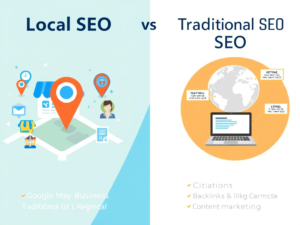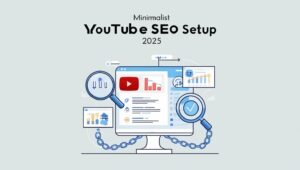Succcessful Website Designer
Introduction
Tired of trading hours for dollars? Dreaming of a career where creativity meets lucrative opportunities? Welcome to the world of web design! With the digital landscape expanding rapidly, the demand for skilled website designers is soaring. But how do you stand out from the crowd and transform your passion into a profitable venture? This comprehensive guide is your roadmap to becoming a successful website designer, unlocking the secrets to earning more and growing faster.

Discover proven strategies to build a thriving design business, attract high-paying clients, and master the art of delivering exceptional website experiences. Whether you’re a seasoned pro or just starting, this article will equip you with the knowledge and tools to achieve your full potential. Let’s dive in and explore the exciting world of web design together!
Table of Contents
Understanding the Web Design Landscape
The Lucrative World of Web Design
Statistical Overview of Industry Growth and Earning Potential
The web design industry is experiencing unprecedented growth, fueled by the increasing reliance on digital platforms. A plethora of businesses, from startups to established enterprises, are investing heavily in crafting compelling online presences. This surge in demand has translated into a lucrative landscape for skilled web designers.
Statistical Snapshot:
- Industry Growth: The web design services market is projected to experience substantial growth in the coming years, driven by factors such as e-commerce expansion, mobile optimization, and digital transformation.
- Earning Potential: Web designers can command competitive salaries or generate substantial income as freelancers or entrepreneurs. Earning potential varies based on experience, specialization, location, and project complexity.
- Freelancing Opportunities: The freelance market for web designers is thriving, offering flexibility and the potential for high earnings. Platforms like Upwork and Fiverr have democratized access to a global client base.
Diverse Niches Within Web Design
The web design industry encompasses a wide range of specializations, allowing professionals to focus on their areas of interest and expertise.
Key Niches:
- Ecommerce Website Designer: Specializing in creating online stores that drive sales and conversions.
- WordPress Web Designer: Focusing on developing websites using the popular WordPress platform.
- UI/UX Designer: Prioritizing user experience and interface design for intuitive and engaging websites.
- Responsive Web Designer: Creating websites that adapt seamlessly to different screen sizes and devices.
- Web Developer: Combining design with coding to build fully functional websites.
Pros and Cons of Different Niches
| Niche | Pros | Cons |
|---|---|---|
| Ecommerce Website Designer | High earning potential, opportunity for recurring revenue | Requires in-depth understanding of online sales and marketing |
| WordPress Web Designer | High demand, user-friendly platform | Potential for competition, limited customization options |
| UI/UX Designer | Focus on creativity and user experience | Requires strong analytical skills and understanding of user behavior |
| Responsive Web Designer | Adaptability to market trends, high demand | Requires technical expertise in various screen sizes |
| Web Developer | Comprehensive skill set, higher earning potential | Requires strong coding abilities, time-consuming projects |
By identifying your strengths and passions, you can carve a niche for yourself within the web design industry and maximize your earning potential.
Identifying Your Niche: The Cornerstone of a Successful Web Design Business
Importance of Specialization
In the competitive world of web design, standing out is crucial. Specialization allows you to position yourself as an expert in a specific area, attracting clients seeking specialized skills. By focusing on a niche, you can:
- Build Authority: Become a recognized expert in your chosen niche.
- Attract Targeted Clients: Target clients with specific needs, increasing conversion rates.
- Charge Premium Rates: Offer specialized services at higher prices.
- Reduce Competition: Stand out in a crowded marketplace.
Assessing Your Skills and Interests
Before diving into a niche, evaluate your existing skill set and passions. Consider the following:
- Core Competencies: Identify your strengths in web design, such as UI/UX, front-end development, or back-end development.
- Design Style: Determine your preferred design aesthetic (minimalistic, modern, vintage, etc.).
- Industry Knowledge: Assess your familiarity with specific industries or sectors.
- Personal Interests: Explore areas that genuinely excite you, as passion can drive creativity and motivation.
Market Research to Find Profitable Niches
Thorough market research is essential for identifying profitable niches. Consider these steps:
- Identify Potential Niches: Brainstorm industries or sectors that align with your skills and interests.
- Competitive Analysis: Evaluate the competition in your chosen niches.
- Customer Needs: Understand the specific requirements and challenges of target clients.
- Profitability Assessment: Analyze the potential earning potential of different niches.
Example Niches for Web Designers:
- Ecommerce website designer: Specialize in creating online stores for businesses of all sizes.
- Small business website designer: Focus on designing websites for local businesses and startups.
- Healthcare website designer: Cater to the specific needs of hospitals, clinics, and medical practices.
- Real estate website designer: Create websites for real estate agents and property developers.
Pros and Cons of Specialization
| Pros | Cons |
|---|---|
| Deeper expertise | Limited client base |
| Higher perceived value | Potential for market fluctuations |
| Stronger brand identity | Increased competition within niche |
| Higher profit margins | Requires continuous learning and adaptation |

Building a Strong Foundation
Mastering Design Fundamentals: The Bedrock of Successful Design
A strong foundation in design principles is essential for creating effective and visually appealing designs. This section will explore fundamental concepts, the significance of user experience (UX), and the importance of staying updated with design trends.
Understanding Design Principles
Design principles are the guiding rules that inform design decisions. They help create visually pleasing and functional designs.
Key Design Principles
- Balance: Distributing visual weight evenly to create harmony.
- Contrast: Creating visual interest through differences in elements.
- Hierarchy: Establishing visual importance through emphasis.
- Repetition: Using consistent elements to create rhythm and unity.
- Alignment: Organizing elements in a clear and logical manner.
- Proximity: Grouping related elements together to improve readability.
- White Space: Using empty space to enhance focus and clarity.
The Indispensable Role of User Experience (UX)
User experience (UX) focuses on creating products and services that are easy to use and enjoyable. A well-designed UX leads to satisfied users and increased engagement.
Importance of UX in Design
- Increased User Satisfaction: A positive UX leads to happy customers.
- Improved Conversion Rates: A seamless user journey encourages purchases.
- Enhanced Brand Loyalty: Consistent positive experiences build trust.
- Better Search Engine Rankings: Search engines favor user-friendly websites.
Staying Ahead with Design Trends
The design landscape is constantly evolving. Staying updated with the latest trends is crucial for creating modern and relevant designs.
Benefits of Keeping Up with Design Trends
- Relevance: Designs appear fresh and contemporary.
- Competitive Advantage: Stand out from competitors.
- User Expectations: Meet user preferences and expectations.
- Innovation: Inspire new design ideas and approaches.
Applying Design Fundamentals to Real-World Scenarios
These design principles and UX considerations are essential for various design disciplines, including web design.
- How to Design a Website for a Small Business: Focus on clarity, simplicity, and a strong call to action.
- Ecommerce Website Designer: Prioritize user-friendly navigation, clear product information, and a smooth checkout process.
- Slow Website Design Fix: Optimize images, minimize code, and improve website structure for faster loading times.
- Increase Website Traffic: Create visually appealing designs that engage users and encourage sharing.
- Website Designer: Continuously learn and adapt to new design trends and technologies.
Technical Skills for a Website Designer
To excel as a website designer, a strong foundation in technical skills is essential. These skills enable you to create functional, visually appealing, and user-friendly websites. Let’s explore the key technical areas:
Programming Languages: The Building Blocks
- HTML (HyperText Markup Language): The backbone of every website, HTML structures the content and defines its layout. It’s crucial for understanding how websites are built.
- CSS (Cascading Style Sheets): This language styles the HTML elements, controlling the appearance, layout, and responsiveness of a website.
- JavaScript: While not strictly necessary for basic website design, JavaScript enhances interactivity and functionality. It’s used for creating dynamic elements, animations, and user experiences.
Content Management Systems (CMS): Empowering Efficiency
- WordPress: As the most popular CMS, WordPress offers a user-friendly interface for managing website content without extensive coding knowledge. It’s ideal for small businesses and bloggers.
- Other CMS: While WordPress dominates the market, other options like Joomla, Drupal, and Shopify (for ecommerce) exist. Understanding different CMS platforms expands your skill set.
Web Development Tools and Software
- Text Editors: Essential for writing and editing code, popular options include Sublime Text, Visual Studio Code, and Atom.
- Design Software: Tools like Adobe Photoshop and Illustrator are valuable for creating visual assets.
- Prototyping Tools: Figma, Sketch, and Adobe XD help design website layouts and user interfaces before development.
- Version Control: Git is a powerful tool for managing code changes and collaboration.
- Browser Developer Tools: Built into modern browsers, these tools aid in debugging, inspecting website elements, and performance optimization.
Balancing Technical Proficiency with Design Aesthetics
While technical skills are fundamental, it’s equally important to combine them with design principles. A successful website designer understands both the code and the art of creating visually appealing and user-centric experiences.
Technical Skills Matrix
| Skill | Importance | Pros | Cons |
|---|---|---|---|
| HTML | Essential | Foundation of web structure | Requires knowledge of other languages for styling and functionality |
| CSS | Essential | Controls website appearance | Can be complex for intricate designs |
| JavaScript | Desirable | Adds interactivity and functionality | Requires in-depth knowledge for complex applications |
| WordPress | Highly Desirable | User-friendly, large community | Limited customization for complex websites |
| Design Software | Desirable | Creates professional visuals | Requires additional learning curve |
Building Your Brand and Portfolio
Creating a Strong Online Presence
Building a Professional Website
A professional website is the cornerstone of a strong online presence. It serves as your digital portfolio, showcasing your skills and expertise to potential clients.
How to Design a Website for a Small Business When designing a website for a small business, focus on simplicity, clarity, and user experience. Consider these key elements:
- Identify your target audience: Understanding your clients will help tailor your website’s content and design.
- Choose a user-friendly platform: Platforms like WordPress, Wix, and Squarespace offer easy-to-use templates.
- Optimize for mobile devices: Ensure your website is responsive and looks great on smartphones and tablets.
- Prioritize clear calls to action: Guide visitors to take desired actions, such as contacting you or requesting a quote.
- Increase website traffic: Use SEO, PPC advertising, and social media to drive visitors to your site.
Ecommerce Website Designer If you specialize in ecommerce websites, highlight your expertise in your portfolio. Showcase your ability to create online stores that are visually appealing, user-friendly, and optimized for conversions.
Slow Website Design Fix A slow website can deter potential clients. Optimize images, minimize code, and choose a reliable hosting provider to improve website speed.
Leveraging Social Media Platforms
Social media platforms offer a powerful way to connect with potential clients, build your brand, and share your work.
- Choose the right platforms: Focus on platforms where your target audience is most active.
- Create engaging content: Share design tips, industry news, and behind-the-scenes glimpses of your work.
- Build relationships: Interact with other designers, potential clients, and industry influencers.
- Utilize social media advertising: Target specific audiences with paid ads to increase visibility.
Networking with Other Designers
Building relationships with other designers can lead to collaborations, referrals, and valuable insights.
- Attend industry events: Connect with other designers at conferences, workshops, and meetups.
- Join online communities: Participate in design forums and groups.
- Collaborate on projects: Work with other designers on joint ventures or freelance projects.
Pros and Cons of Networking
| Pros | Cons |
|---|---|
| Expand professional network | Time-consuming |
| Access to new opportunities | Potential competition |
| Gain industry insights | Requires effort and consistency |
| Build strong relationships | Can be overwhelming |
By combining a professional website, active social media presence, and strong networking efforts, you can establish a solid online presence and attract potential clients.

Developing a Compelling Portfolio: Showcasing Your Best Work
A strong portfolio is essential for any website designer. It serves as a showcase of your skills, creativity, and ability to deliver exceptional results. Let’s explore how to create a portfolio that effectively highlights your work and attracts potential clients.
Showcasing Your Best Work
Your portfolio should be a curated collection of your finest projects. Focus on quality over quantity.
- Identify Your Strongest Projects: Select projects that best represent your skills and align with your target audience.
- Highlight Key Achievements: Clearly communicate the goals, challenges, and solutions for each project.
- Use High-Quality Visuals: Invest in professional photography or design to showcase your work in the best possible light.
- Showcase Diverse Styles: Demonstrate your versatility by including projects with varying aesthetics and functionalities.
Highlighting Diverse Project Types
A diverse portfolio showcases your adaptability and ability to handle different client needs.
- Include a Range of Projects: Showcase your expertise in different industries or project types (e.g., small business websites, ecommerce platforms, portfolio websites).
- Highlight Unique Projects: Showcase projects that demonstrate innovative solutions or problem-solving skills.
- Demonstrate Technical Proficiency: Include projects that highlight your proficiency in various design tools and technologies.
Storytelling Through Your Portfolio
A well-crafted narrative can make your portfolio more engaging and memorable.
- Define Your Brand Story: Develop a clear brand identity and communicate it through your portfolio.
- Create a Logical Flow: Organize your projects in a way that tells a compelling story about your design journey.
- Use Engaging Copy: Write clear and concise project descriptions that highlight the value you delivered.
- Incorporate Client Testimonials: Share positive feedback from satisfied clients to build credibility.
Pros and Cons of Different Portfolio Formats
| Format | Pros | Cons |
|---|---|---|
| Online Portfolio | Accessibility, easy updates, ability to showcase interactive elements | Potential for technical issues, reliance on internet connection |
| Physical Portfolio | Tangible presentation, high-quality visuals, personal touch | Limited accessibility, costly to produce and maintain |
| Hybrid Portfolio | Combines the best of both worlds, offers flexibility | Requires more effort to manage |
Additional Tips for a Standout Portfolio
- Optimize for SEO: Use relevant keywords like website designer, ecommerce website designer, and how to design a website for a small business to improve search engine visibility.
- Make it Mobile-Friendly: Ensure your portfolio is accessible and visually appealing on different devices.
- Update Regularly: Showcase your latest work to demonstrate your continued growth and development.
- Seek Feedback: Gather input from peers and potential clients to improve your portfolio.
Attracting and Retaining Clients
Effective Client Acquisition: Building a Strong Client Base
Understanding the Importance of Client Acquisition
Acquiring new clients is essential for the growth and sustainability of any website design business. A robust client base not only generates revenue but also provides valuable opportunities for portfolio expansion, skill enhancement, and industry networking.
Building a Strong Client Base
A solid foundation for client acquisition is crucial. This involves:
- Defining Your Target Market: Clearly identifying your ideal client will help you focus your marketing efforts. Consider factors such as industry, business size, and budget.
- Crafting a Compelling Value Proposition: Clearly communicate the unique benefits your website design services offer. Highlight how your skills can solve clients’ problems and achieve their goals.
- Leveraging Networking Opportunities: Attend industry events, conferences, and online forums to connect with potential clients and build relationships.
- Building a Strong Online Presence: A professional website showcasing your portfolio and services is essential. Utilize SEO and social media to increase visibility.
Pricing Strategies
Determining the right pricing structure is vital for profitability. Consider these strategies:
- Hourly Rate: Charge based on the number of hours worked.
- Project-Based Fee: Set a fixed price for a specific project.
- Retainer: Establish a monthly or annual fee for ongoing services.
- Value-Based Pricing: Charge based on the perceived value of your services to the client.
Effective Sales and Negotiation Techniques
Successful client acquisition often depends on strong sales and negotiation skills. Key strategies include:
- Active Listening: Understand clients’ needs and pain points to tailor your solutions effectively.
- Building Rapport: Establish trust and rapport to create a positive relationship.
- Overcoming Objections: Anticipate potential objections and prepare persuasive responses.
- Negotiation: Find common ground and reach mutually beneficial agreements.
Pros and Cons of Different Pricing Models
| Pricing Model | Pros | Cons |
|---|---|---|
| Hourly Rate | Flexible, adaptable to project scope | Time-consuming to track, potential for scope creep |
| Project-Based Fee | Predictable income, clear project boundaries | Requires accurate project estimation, limited flexibility |
| Retainer | Stable income, long-term client relationships | Requires consistent service delivery, potential for underutilization |
| Value-Based Pricing | Higher perceived value, potential for premium pricing | Challenging to justify, relies on client perception |
By combining effective client acquisition strategies, strategic pricing, and strong sales and negotiation skills, you can build a thriving website design business and attract a steady stream of clients.
Delivering Exceptional Client Service: Building Long-Term Relationships
Exceptional client service is the cornerstone of a successful website design business. It’s crucial for building trust, retaining clients, and generating positive word-of-mouth. Let’s explore key strategies for delivering outstanding client service.
Building Long-Term Relationships
Strong client relationships are essential for sustained business growth. Here’s how to cultivate them:
- Understand your clients’ needs: This involves active listening, asking probing questions, and truly understanding their goals.
- Exceed expectations: Consistently deliver high-quality work that surpasses client expectations.
- Open communication: Maintain open and honest communication throughout the project.
- Build trust: Be reliable, transparent, and trustworthy in all interactions.
- Offer exceptional value: Go the extra mile to provide additional services or support.

Pros of long-term relationships:
- Increased referrals and repeat business
- Higher customer lifetime value
- Stronger brand reputation
- Deeper understanding of client needs
Cons of long-term relationships:
- Potential for complacency
- Increased reliance on a few clients
- Risk of scope creep
Managing Client Expectations
Effective communication and setting clear expectations are vital for preventing misunderstandings and ensuring client satisfaction.
- Define project scope: Clearly outline project deliverables, timelines, and budget.
- Set realistic expectations: Avoid overpromising and underdelivering.
- Regular updates: Keep clients informed about project progress.
- Manage scope creep: Establish a process for handling additional requests.
- Be proactive: Anticipate potential challenges and address them proactively.
Handling Client Feedback
Client feedback is invaluable for improving services and building stronger relationships.
- Encourage feedback: Create opportunities for clients to share their thoughts.
- Listen actively: Pay attention to client concerns and suggestions.
- Address feedback promptly: Respond to feedback in a timely and professional manner.
- Implement improvements: Use feedback to enhance your services.
- Show gratitude: Thank clients for their feedback, regardless of whether it’s positive or negative.
Pros of handling client feedback effectively:
- Improved customer satisfaction
- Opportunities for service enhancement
- Stronger client relationships
- Increased trust and loyalty
Cons of handling client feedback ineffectively:
- Damaged reputation
- Loss of clients
- Missed opportunities for improvement
By prioritizing client satisfaction, building strong relationships, and effectively managing expectations and feedback, you can establish yourself as a trusted website designer and achieve long-term success in your business.
Scaling Your Business
Expanding Your Team: Building a Successful Web Design Agency
As your website design business grows, so does the need for additional talent. Whether you’re looking to scale your operations or focus on specific areas, expanding your team can be a strategic move. Let’s explore two primary options: hiring freelancers or employees.
Hiring Freelancers vs. Employees
Freelancers offer flexibility and cost-efficiency, especially for short-term projects or specific skill sets. However, managing multiple freelancers can be time-consuming.
Employees provide stability, consistency, and deeper company involvement. They often require more investment in terms of salary, benefits, and training.
| Feature | Freelancers | Employees |
|---|---|---|
| Cost | Lower upfront costs, hourly or project-based pay | Higher upfront costs, salary, benefits |
| Commitment | Flexible, project-based | Long-term commitment, job security |
| Control | Less control over work hours and environment | More control over work hours and environment |
| Benefits | No benefits provided | Health insurance, paid time off, etc. |
Effective Task Delegation
Once you’ve assembled your team, effective task delegation is crucial.
- Assess team members’ strengths: Match tasks to individual skills and interests.
- Set clear expectations: Clearly define project goals, deadlines, and deliverables.
- Provide necessary resources: Equip team members with the tools and information they need.
- Monitor progress: Regularly check in on project status and provide feedback.
Building a Strong Team Culture
A positive team culture fosters collaboration, creativity, and productivity.
- Define core values: Establish shared beliefs and guiding principles.
- Encourage open communication: Create a safe space for sharing ideas and feedback.
- Recognize and reward achievements: Celebrate successes and acknowledge contributions.
- Promote work-life balance: Support employees’ well-being and prevent burnout.
Diversifying Your Services: Expanding Your Business Horizons
As a website designer, offering a single service might limit your growth potential. Diversifying your services can open new avenues for revenue and client acquisition. Let’s explore how to expand your offerings.
Offering Additional Services
By providing complementary services, you can increase your value proposition to clients and boost your overall revenue.
SEO Services
- What is SEO? Search Engine Optimization is the process of optimizing your website to rank higher in search engine results.
- Why offer SEO? Clients often require SEO services to increase website visibility and attract more organic traffic.
- Benefits of offering SEO: Increased revenue, deeper client relationships, positioning as a full-service digital agency.
Digital Marketing Services
- What is digital marketing? Digital marketing encompasses various online strategies to promote a business and reach target audiences.
- Why offer digital marketing? Clients often need assistance with social media management, email marketing, and online advertising.
- Benefits of offering digital marketing: Expanded service offerings, higher average project value, increased client retention.
Other Potential Services
- Content creation: Writing blog posts, articles, or social media content.
- E-commerce website design: Creating online stores for clients selling products or services.
- Website maintenance and updates: Providing ongoing support and updates.
Exploring New Business Opportunities
Diversification also involves exploring new business ventures that align with your core competencies.
- Online courses or workshops: Share your expertise through online training programs.
- Digital products: Create and sell digital products like website templates, ebooks, or stock photos.
- Freelance platforms: Expand your client base by offering services on platforms like Upwork or Fiverr.
Pros and Cons of Diversification
| Pros | Cons |
|---|---|
| Increased revenue streams | Requires additional skills and resources |
| Deeper client relationships | Potential for spreading yourself too thin |
| Expanded market reach | Increased competition |
| Enhanced brand reputation | Risk of project failures |
Tips for Successful Diversification
- Identify your strengths: Focus on services that align with your skills and passions.
- Conduct market research: Understand customer needs and industry trends.
- Set clear goals: Define your diversification objectives and timeline.
- Build a strong team: Consider hiring or outsourcing to support new services.
- Prioritize client satisfaction: Maintain high-quality service standards across all offerings.
By strategically diversifying your services, you can position yourself as a comprehensive digital solutions provider and achieve long-term business growth.
Financial Management: The Backbone of Business Success
Effective financial management is crucial for the success of any business, especially for small businesses and startups. It involves careful planning, budgeting, tax compliance, and strategic investment. Let’s delve into these key components.
Budgeting and Financial Planning
A well-structured budget is the cornerstone of financial management. It serves as a roadmap for your business’s financial health.
Key Elements of Budgeting and Financial Planning:
- Revenue Forecasting: Estimate your potential income based on market research, sales projections, and pricing strategies.
- Expense Tracking: Identify and categorize all business expenses, including operational costs, marketing, and salaries.
- Cash Flow Management: Monitor your incoming and outgoing cash to ensure sufficient liquidity.
- Financial Goals: Set clear financial objectives, such as increasing revenue, reducing expenses, or achieving profitability.
Tools and Resources:
- Budgeting Software: Utilize tools like Excel, QuickBooks, or specialized budgeting apps to streamline the process.
- Financial Projections: Create detailed financial forecasts to guide decision-making.
- Professional Advice: Consult with an accountant or financial advisor for expert guidance.
Tax Considerations
Understanding and complying with tax regulations is essential for businesses of all sizes.
Key Tax Considerations:
- Business Structure: Choose the appropriate legal structure (sole proprietorship, partnership, LLC, corporation) to optimize tax benefits.
- Tax Deductions: Identify and claim eligible deductions to minimize your tax liability.
- Sales Tax: Collect and remit sales tax accurately to avoid penalties.
- Payroll Taxes: Withhold and remit appropriate payroll taxes for employees.
Tools and Resources:
- Tax Software: Use tax preparation software to simplify the filing process.
- Tax Professionals: Engage a qualified accountant or tax advisor for expert assistance.
Investing in Your Business
Strategic investments can drive business growth and improve profitability.
Investment Areas:
- Technology: Invest in software, hardware, and online tools to enhance efficiency and productivity.
- Marketing and Advertising: Allocate funds for effective marketing campaigns to reach your target audience.
- Employee Development: Invest in employee training and development to improve skills and performance.
- Research and Development: Allocate resources for innovation and product development.
Evaluating Investment Opportunities:
- Return on Investment (ROI): Assess the potential return on each investment to prioritize spending.
- Risk Assessment: Evaluate the potential risks associated with each investment.
- Long-Term Goals: Align investments with your overall business objectives.
Additional Considerations:
- Funding Options: Explore financing options such as loans, grants, or investor funding.
- Financial Analysis: Conduct thorough financial analysis to evaluate the impact of investments on your bottom line.
How to Design a Website for a Small Business: A well-designed website can be an investment that generates ROI through increased sales and brand awareness.Ecommerce Website Designer: Hiring an ecommerce website designer can be an investment in improving online sales and customer experience.Slow Website Design Fix: Investing in website speed optimization can lead to improved user experience and higher conversion rates.Increase Website Traffic: Investing in SEO, PPC advertising, and content marketing can drive website traffic and generate leads.Website Designer: Collaborating with a skilled website designer can be a valuable investment in creating a professional online presence.
By effectively managing your finances, you can lay a solid foundation for your business’s success. Remember to regularly review and adjust your financial strategies to adapt to changing market conditions.
Conclusion
Recap of Key Points
Building a successful career as a website designer requires a strategic approach. By mastering essential design principles, understanding client needs, and effectively marketing your services, you can establish a thriving business.
Key areas to focus on include:
- Developing a strong portfolio showcasing your website design skills
- Building a robust online presence through SEO and social media
- Offering a variety of services, such as ecommerce website design and website traffic optimization
- Understanding the importance of website speed and user experience
Call to Action
Ready to transform your passion for design into a profitable venture? Sign up for our free e-book on “Landing Your First Web Design Client” and gain valuable insights to kickstart your career.
Final Thoughts
The world of web design is constantly evolving, offering exciting opportunities for creative individuals. With dedication, perseverance, and a keen understanding of client needs, you can build a successful and fulfilling career as a website designer.
Remember, every successful ecommerce website designer started somewhere. Embrace challenges, learn from your experiences, and most importantly, enjoy the process of bringing your creative vision to life.
By following these guidelines and continuously honing your skills, you’ll be well-equipped to navigate the competitive landscape and achieve your goals as a website designer.
Are you ready to embark on your web design journey?
FAQs ( frequently Asked question)
What is the role of a website designer?
A website designer is responsible for creating the visual and interactive elements of a website. This includes layout, color schemes, typography, and user interface (UI). They focus on creating an aesthetically pleasing and user-friendly exoerience.
What is the difference between a website designer and an ecommerce website designer?
While both deal with website design, an ecommerce website designer specializes in creating online stores. They have expertise in integrating shopping carts, payment gateways, inventory management, and other features specific to online sales.
How long does it take to design a website?
The time required to design a website varies depending on its complexity. A simple website might take a few weeks, while a complex ecommerce platform could take several months. Factors like website size, design complexity, and client involvement influence the timeline.
How much does it cost to design a website?
Website design costs can range significantly based on factors such as website size, complexity, design style, and the designer’s experience. Small business websites typically cost less than complex ecommerce platforms.
How can I improve my website’s loading speed?
To increase website speed, consider these strategies:
Optimize images: Compress images without sacrificing quality.
Minimize HTTP requests: Reduce the number of files your website needs to load.
Leverage browser caching: Store static files locally to improve load times.
Choose a reliable hosting provider: A fast server can significantly impact speed.
Utilize content delivery networks (CDNs): Distribute website content across multiple servers for faster delivery.
How can I increase traffic to my website?
To increase website traffic, implement these strategies:
Search engine optimization (SEO): Optimize your website’s content to rank higher in search results.
Pay-per-click (PPC) advertising: Create targeted ads to reach potential customers.
Social media marketing: Promote your website on social platforms.
Content marketing: Create valuable content to attract and engage visitors.
Email marketing: Build an email list and send targeted campaigns.
What are the pros and cons of using a website builder?
Pros:
User-friendly interface
Pre-designed templates
Cost-effective
Easy to update
Cons:
Limited customization options
Potential for recurring fees
May have performance limitations
How do I choose a website designer?
When selecting a website designer, consider the following:
Portfolio: Review their previous work to assess their design style and skills.
Experience: Look for designers with experience in your industry or with similar projects.
Communication: Effective communication is crucial for a successful project.
Pricing: Get quotes from multiple designers to compare costs.
Client reviews: Read testimonials from previous clients to gauge their satisfaction.





